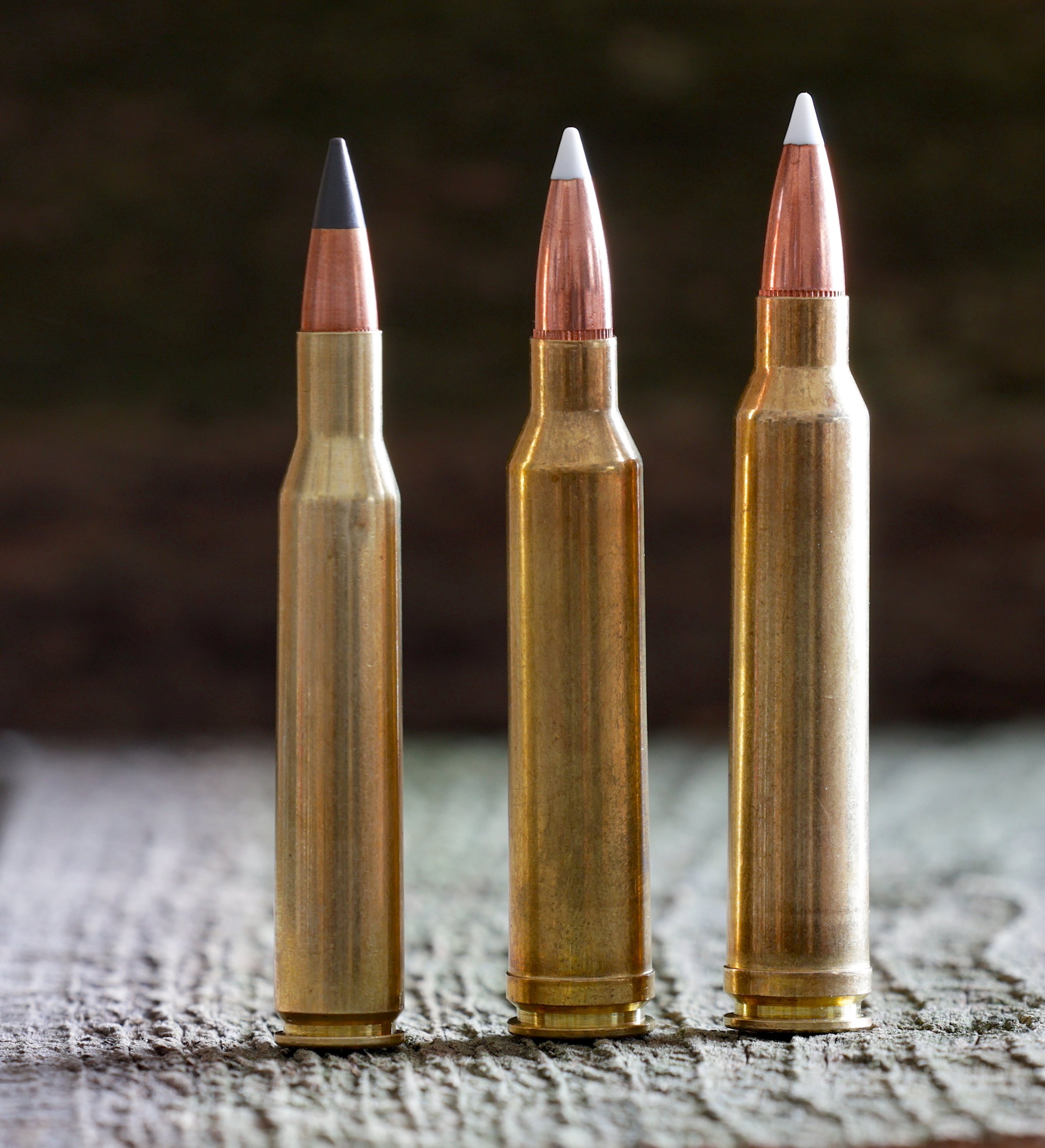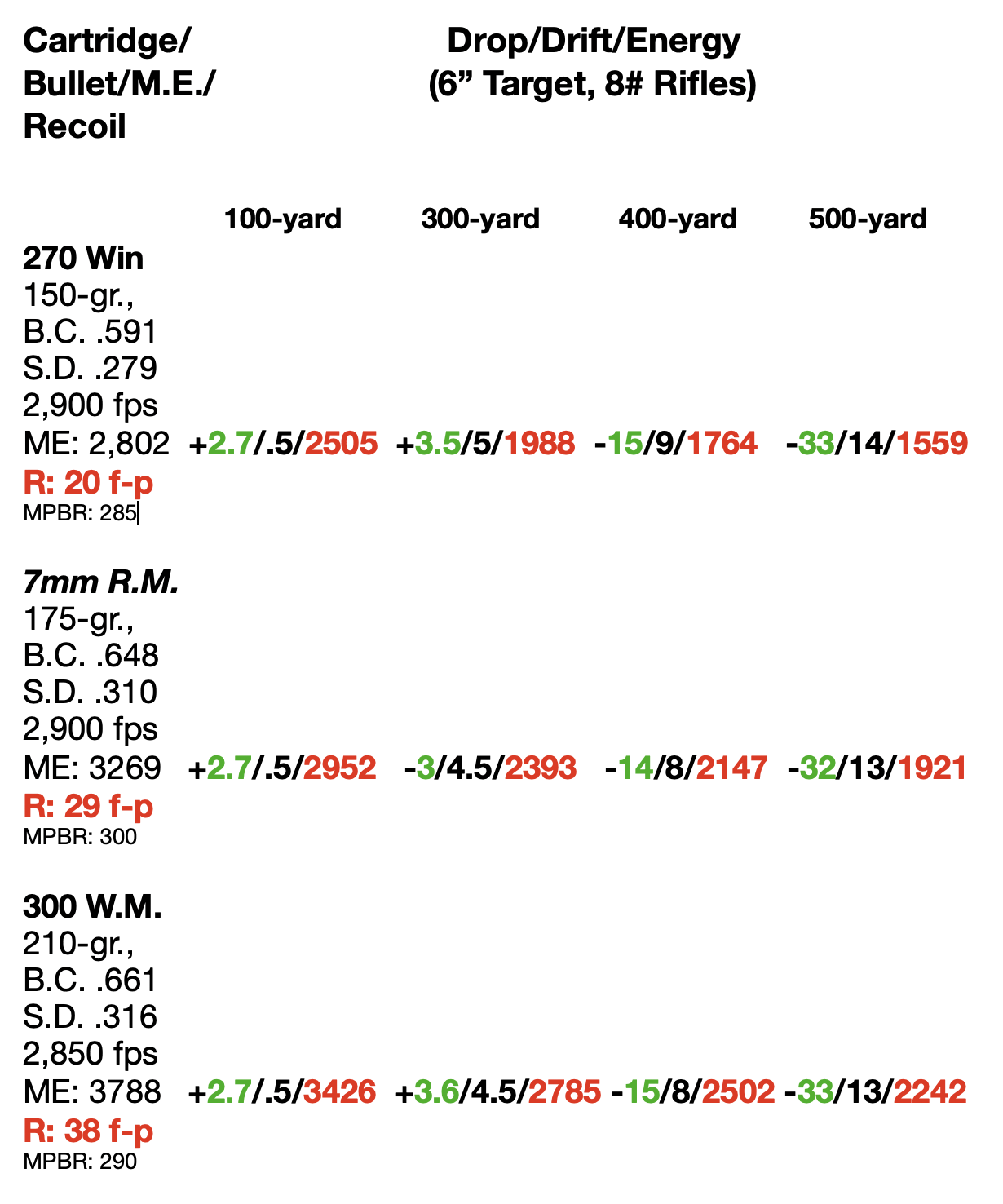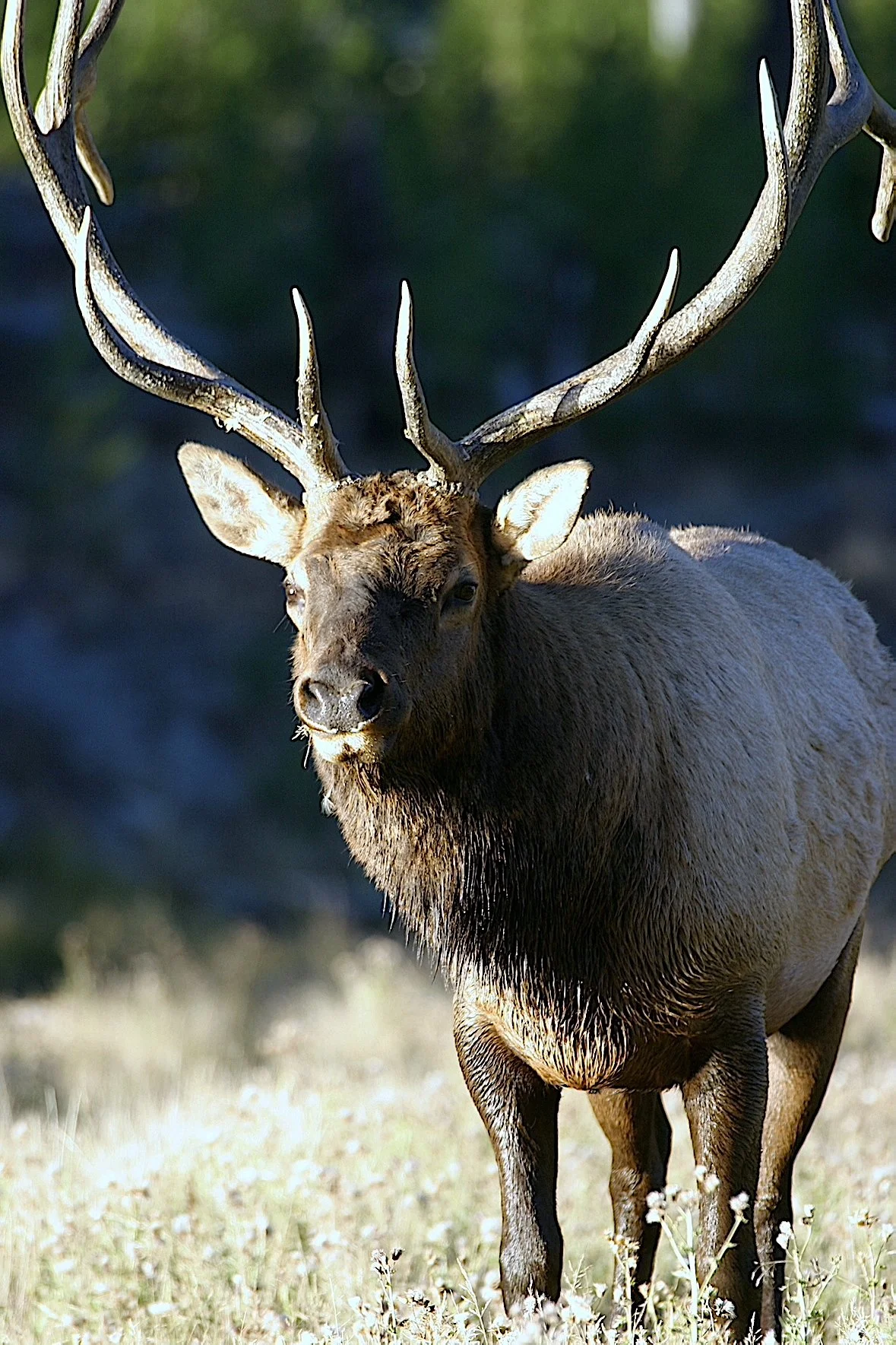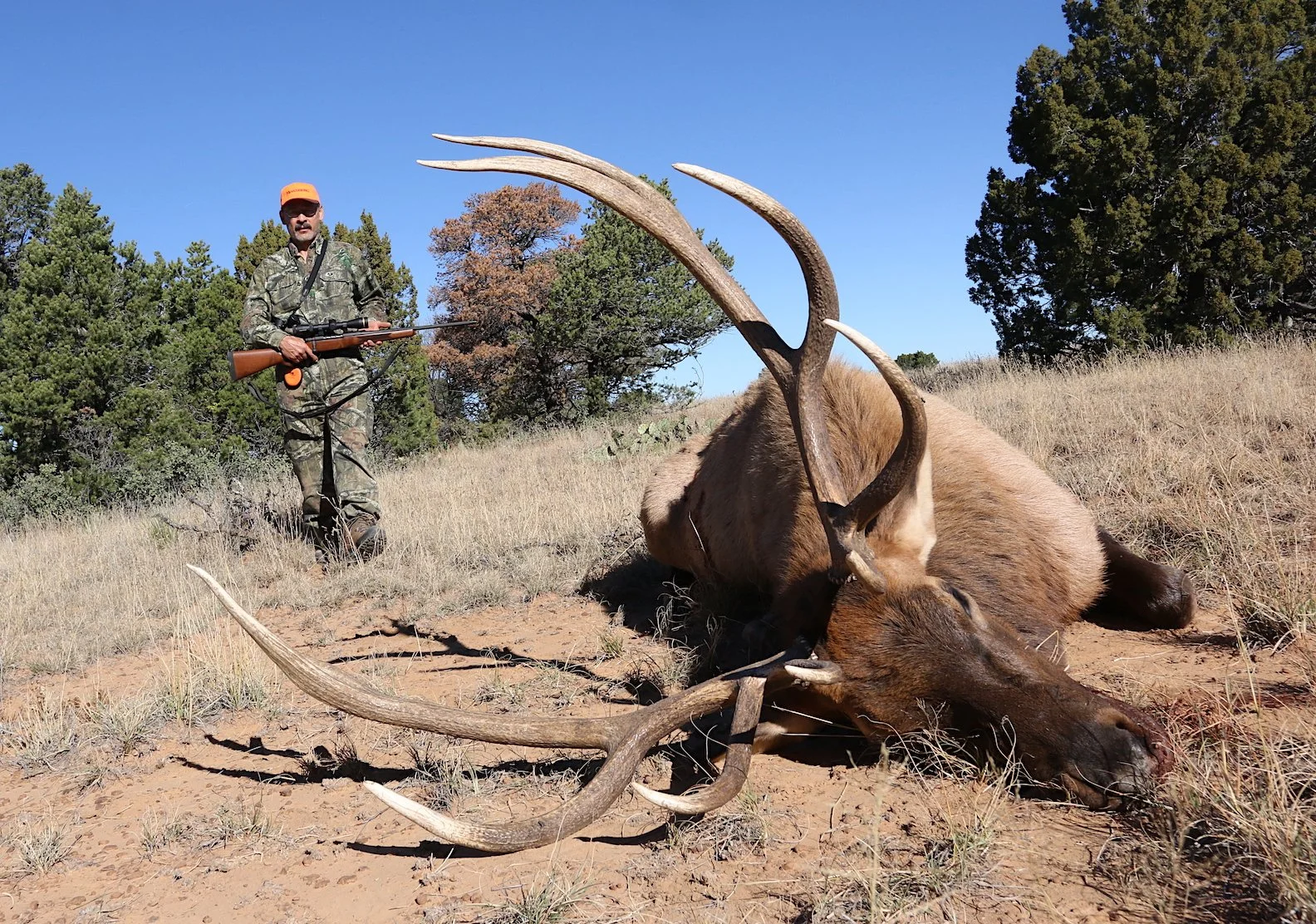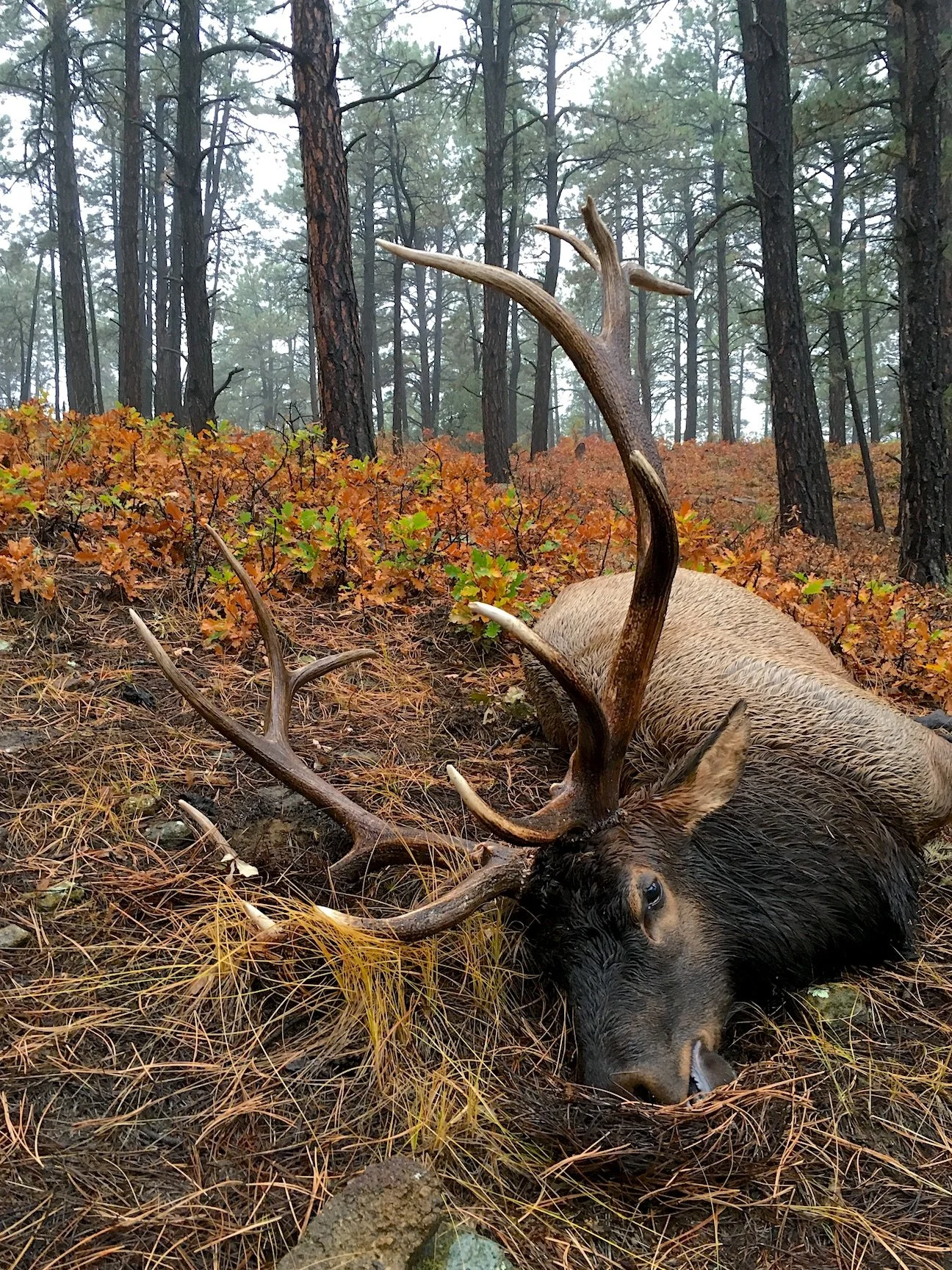270 Winchester, 7mm Rem. Mag., & 300 Win. Mag. Performance Differences (Are they enough to Matter?)
by Ron Spomer
Thousands of hunters believe that the 7mm Remington Magnum and 300 Winchester Magnum deliver significantly improved performance over that of the 270 Winchester. But do they really? Let’s dive into details and see.
The obvious differences are bullet diameter (.277” and .284” and .308”), bullet weights (variable, but we’ll work with 150-gr, 175-gr. and 210-gr. respectively), and higher velocities (roughly 2,900 fps, 2,900 fps, and 2,850 fps.) We’ll use these bullets and velocities to compare these three, then I’ll contribute some illustrative anecdotes from some elk hunts with each cartridge so you can decide for yourself which is your best option for elk hunting.
The 270 Winchester is the 30-06 case necked down to hold a .277” bullet. Usually 130-grain, 140-grain, and 150-grain bullets are loaded in commercial 270 Win. ammo. Handloaders can, usually, safely add 100 fps or so to factory ammo speeds. Elk hunters are advised to use 150-grain bullets because their higher mass and Sectional Density increase penetration. The new 140-grain controlled expansion bullets are a great compromise. Bullet construction plays a big role in penetration. These can be bonded (jacket and lead core welded together,) partitioned with half or more of the lead core locked in the shank, partitioned and bonded, all-copper expanding, or hybrids of all this. Keeping the bullet in one piece to maintain momentum and penetration is the idea.
270 Winchester, 7mm Remington Magnum, 300 Winchester Magnum. How different are their trajectories? Their terminal performance?
The 7mm Rem. Mag. was built by shortening the belted 300 H&H Magnum to fit 30-06-length actions and hold a .284” bullet. The 300 Magnum was from the same 300 H&H cut to 30-06 length but with a bit longer body for more powder volume.
For our comparisons we’ll use a 150-grain AccuBond Long Range bullet in the 270 Win., a 175-gr. ABLR in the 7mm Rem. Mag., and a 210-grain ABLR in the 300 Win. Mag. All ABLRs maximize Ballistic Coefficient for maximum retained energy at all ranges plus minimal wind deflection. We’ll zero each to strike about 3 inches above point of aim at the peak of their trajectory arc. Wind will be right angle, full value, 10 mph.
Perhaps most surprising are the trajectory similarities of these three. Even at 500 yards there is but a 1-inch difference between the 270 Win. and its two larger competitors. This tells me there’s no need to choose the magnums for more reach and less wind deflection at sensible hunting distances. But what about bullet energy?
Here’s the strongest leg for magnum fans to stand on. Yes, the 300 Win. Mag. produces and retains the greatest energy, besting the 7mm Rem. Mag. by 355 f-p at 400 yards, 321 f-p at 500 yards. The poor old 270 Win. gives up 362 f-p to the 7mm Rem. Mag., a whopping 683 f-p to the 300 Win. Mag.
Now, 683 foot-pounds might sound significant, but is it? Nine out of 10 elk surveyed said… absolutely nothing because elk can’t speak. Sorry, couldn’t resist standing that old joke on its head. But I do have a serious point. And this is it: kinetic energy doesn’t kill. Punch. Wallop. Smack. Thump. Knockdown power. Call it what you will, but another 100, 500, or 2,000 foot pounds in a bullet delivered to the chest of an elk is not going to make much of a difference in my experience.
Now what’s this subjective nonsense I’m spouting? Just this: energy beyond enough to propel the bullet to the vitals, disrupt them, and cause extensive hemorrhaging, serves little purpose. If massive foot pounds of energy killed then bullets carrying 4,000 foot-pounds of energy applied to an elk’s paunch ought to knock it down and kill it. Massive energy dump! Ask every elk guide you meet how many gut shot elk they’ve seen collapsed and expire.
You can read about the myth of knockdown power in this blog and believe it or not. But do consider the costs of hunting with a 7mm or 300 magnum before you rush to embrace. Are these two magnums good elk cartridges? Of course. But so are the 338 Win. Mag. and 35 Whelen and 375 H&H and 416 Rem. Mag. and 308 Win. Any cartridge/rifle that helps you place a good bullet in the vitals of your elk is viable. But none have the power to flatten an elk without a central nervous system hit or a lucky hydrostatic shock hit that sometimes works, more often doesn’t. (I love it when it does, whatever it is, but never depend on it.) Now let us visit some of my personal experiences with these three cartridges and three 6x6 bull elk to see if we can note any significant differences in terminal performance.
Hunt one: I send a plain Jane cup-and-core, 130-grain bullet from a 270 Winchester to behind a 6x6 bull’s shoulder from 130 yards. The elk spurts forward about 20 yards, stops, wobbles. I send a 150-gr. premium XP3 to its high shoulder and spine it. Dead right there.
Chad Poppleton helped me stalk and shoot this Montana bull. Winchester XPR rifle in 270 Winchester. One 130-grain Extreme Point bullet behind shoulder, one 150-gr. XP3 bullet on high shoulder.
Hunt two: I send a 160-grain AccuBond from Mossberg Patriot 7mm Rem. Mag. to an elk’s left shoulder from about 70 yards. The elk turns and starts fast-walking away. I put another 160-gr. AB in its right shoulder. It twitches slightly and keeps moving. I try for a high shoulder/spine shot that wobbles the bull. It manages a few more lunges and topples behind a juniper.
Three 160-grain Nosler AccuBond bullets from Mossberg Patriot 7mm Remington Magnum dropped this bull in about six seconds.
Hunt three: This time it’s a 180-grain AccuBond from a Ruger Mk II Hawkeye in 300 Win. Mag. fired from about 40 yards. Smack on the right shoulder. Bull shivers slightly, turns. Second 180-grain applied to left shoulder. Bull walks forward. Third bullet supposed to reach spine in neck, but hits only muscle. Bull wobbles and falls, dead from heart/lung hemorrhaging just like the previous two.
Right shoulder, left shoulder, neck. Three 180-grain Nosler AccuBonds from a Ruger Mk II in 300 Winchester Magnum toppled this CO bull in about 5 seconds. Only the neck shot, which missed the spine, caused him to stumble. Hemorrhaging of the heart/lungs killed him.
I could detect no difference in the bulls’ responses to the hits from any of these. The 600-plus extra foot-pounds of punch from the 300 magnum appeared to make no difference. All three bulls remained on their feet for about the same number of seconds. They all expired from blood loss.
I’ve noticed much the same when shooting mature bulls with a variety of other 7mm and 30-caliber cartridges. Regardless the bullet diameter, mass, or velocity, the bulls take the hits (one time four 180s from a 300 magnum) and remain upright until blood pressure drops. Then they do.
Slight differences in bullet diameter don’t matter nearly as much as materials and construction. Premium controlled expansion bullets are engineered to withstand severe impact energies and retain enough mass in one piece to expand, yet maintain sufficient shank mass to drive that expanded nose deep. L. to R. are: bonded Swift Scirocco, Nosler Partition, Swift A-Frame, and Barnes X. All have felled elk for the author.
My advice, for what it’s worth, is to focus on the bullet and a rifle/cartridge that helps you place that bullet precisely. Said bullet should have the constitution to stay in one piece upon striking shoulder muscle and bone, penetrate to the far shoulder/hide, preferably through that hide, and hit the dirt. That extra hole tells you the bullet has touched maximum tissue to create maximum hemorrhaging. It will also give blood a place to leak out, making any tracking easier. Of course, you want this bullet to expand, but not so much that it pancakes. Controlled expansion bullets mushroom at the nose about 1.5x original diameter. The remaining shank then drives this tearing, ripping mushroom through blood vessels and arteries. The energy it sheds in the process does create a secondary or peripheral wound channel, but this is usually temporary, the physically untouched tissue expanding and contracting after the bullets passing with little or no permanent damage. The bullet energy “wasted” in the dirt beyond is of no consequence because the damage has been done. It’s like an arrow passing through the lungs. It has done its damage. Stopping against the hide on the other side cuts no more lungs, heart, or arteries.
Do I then recommend everyone get a 270 Winchester as the ultimate elk cartridge? Heavens no. But I can’t say with any strong evidence that a 300 Win. Mag. will be any more effective. It seems common sense that it would be. If you believe it will and you can shoot it without flinching, and carry it without quitting early, by all means use it. Bigger isn’t always better, but when it comes to terminating elk, it sure could be.


